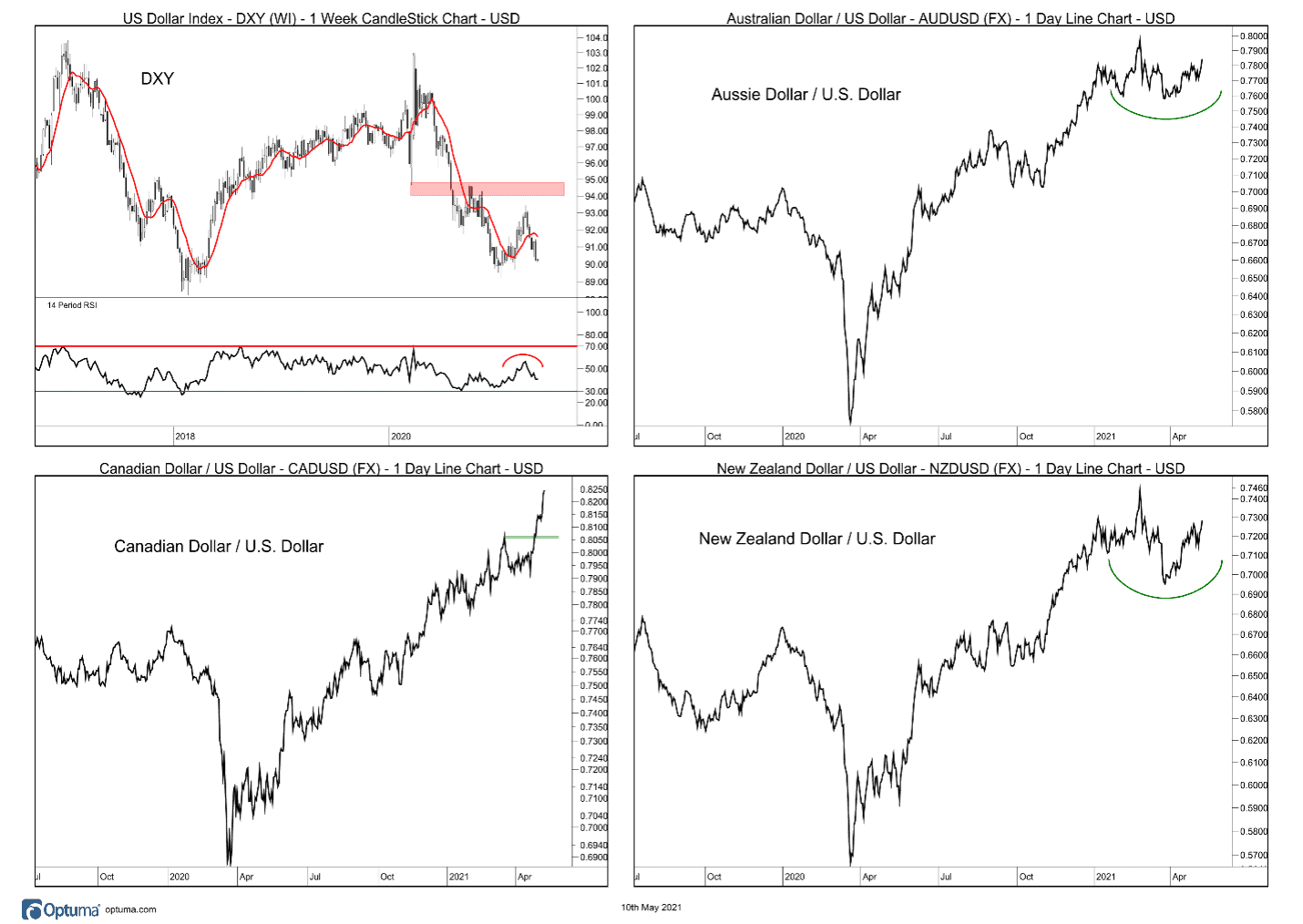
Key Points
- New Highs for Equities in the U.S. and Globally
- Relative Trend for the NASDAQ on the Verge of a Breakdown
- 10-Year Yield Holds Important Support, Next Move Higher?
- Global Equities holding support
- Commodities Breakout…
- …As the Dollar Fades; “Commodity” Currencies are Strong
U.S. Equities
The S&P 500 traded to, and closed at, a record high last week as the steady grind to the upside continues. We note that weakness was, once again, bought and the index remains above the rising 10-week moving average. The weekly RSI is in an overbought condition, confirming the bullish trend.
In the near-term, support comes into play near the 4,100 level (up from 4,000 last week), which lines up with the 10-week moving average. Stronger support for the uptrend from the 2020 low is near 3,700, in line with the rising 40-week moving average.
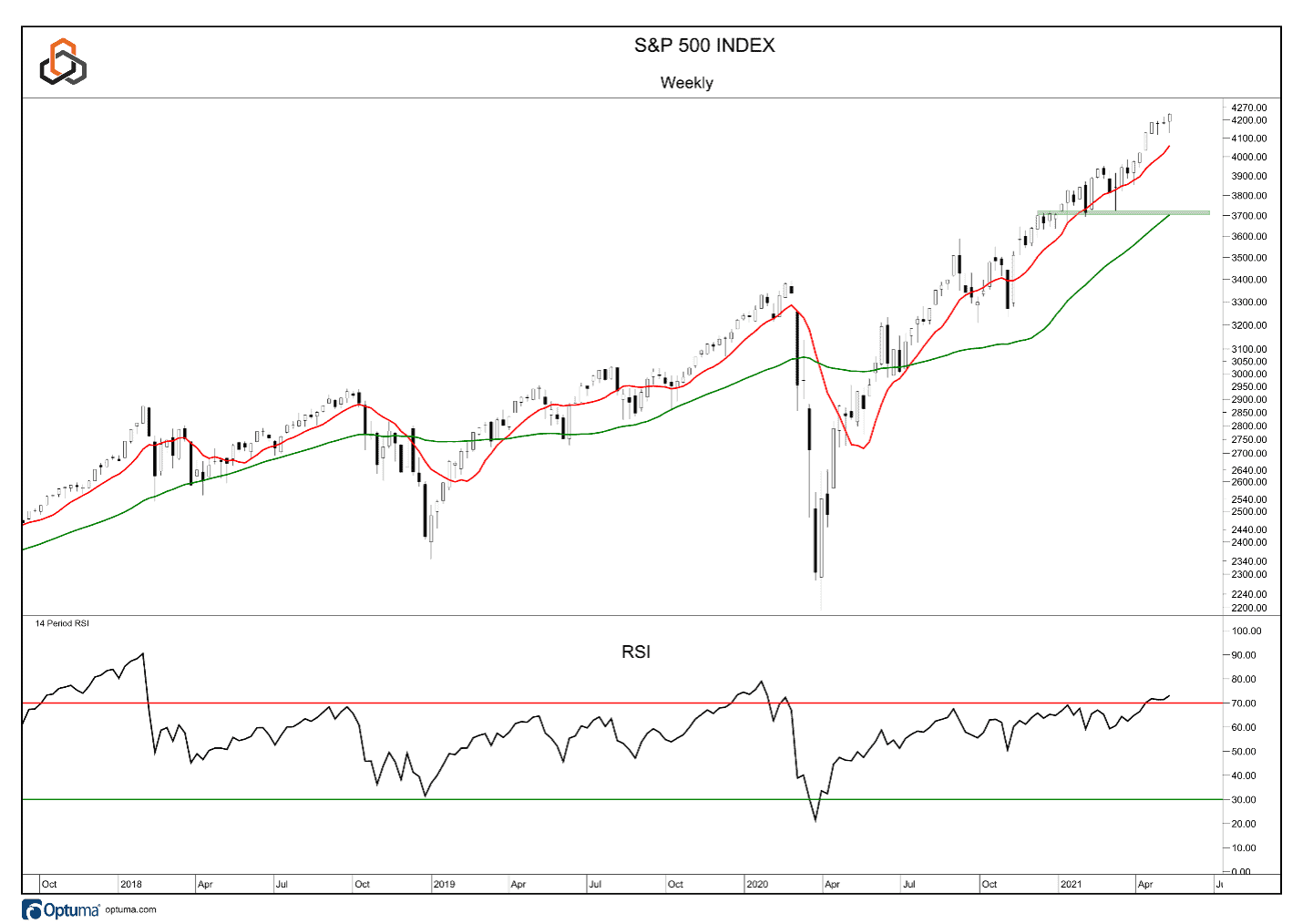
The S&P Small Cap 600 Index is beginning to turn higher from the rising 10-week moving average but continues to trade in the consolidation that began in March. The 14-week RSI continues to hover near overbought levels. Below the moving average, support is in the 1,200 – 1,240 zone in the near-term. More important support is near 1,100, which lines up with the 2018 highs. On the upside, resistance is near the March highs at ~1,400.
On a relative basis, small caps are beginning to turn higher from near-term support, but formidable resistance remains overhead.
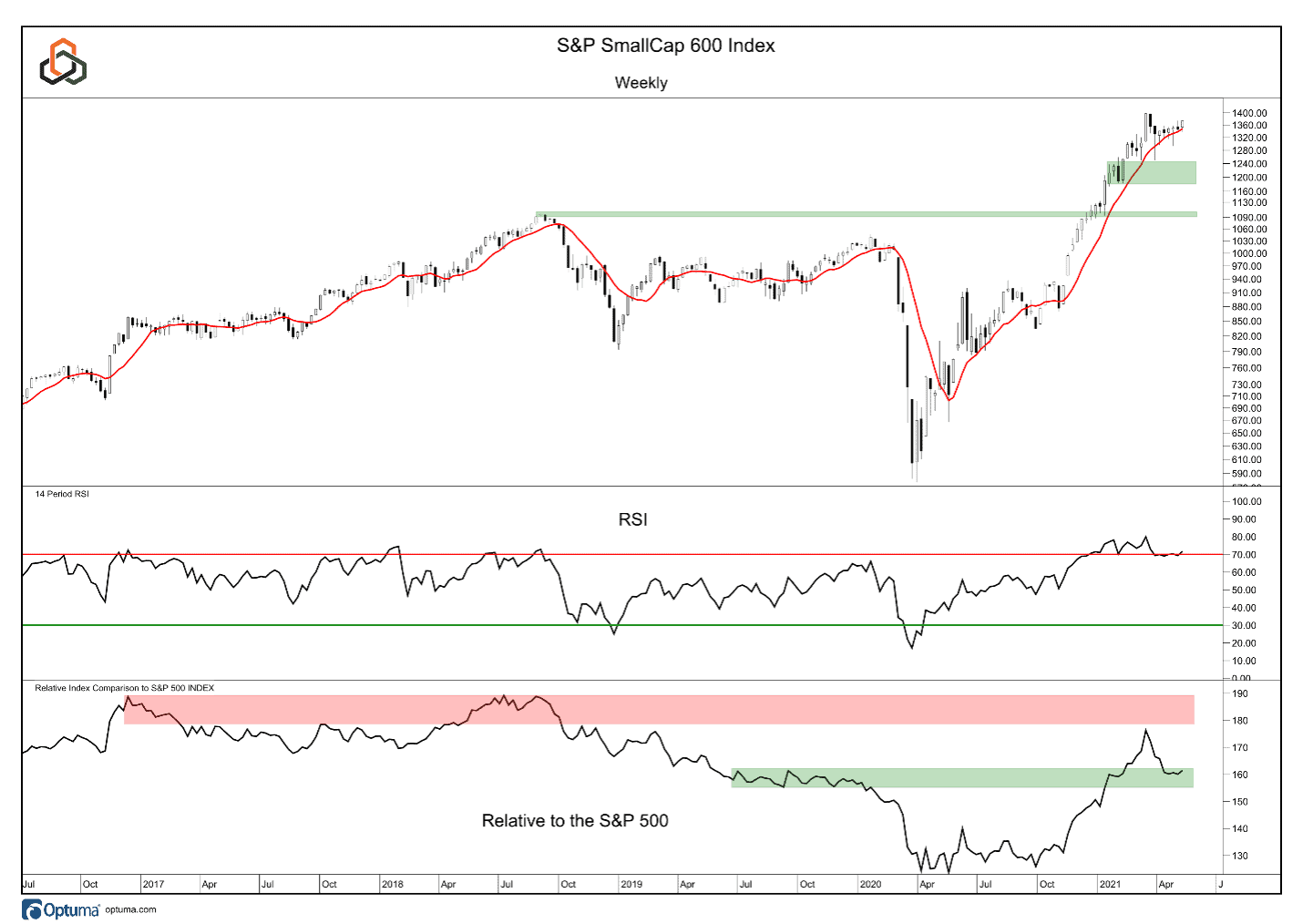
At the sector level within the small cap universe, Energy was once again the standout sector, adding more than 13% on the week to push to within 1% of record highs. Materials and Industrials also outperformed and traded to record levels. Consumer Staples were in the top four sectors on the week but remain in a consolidation.
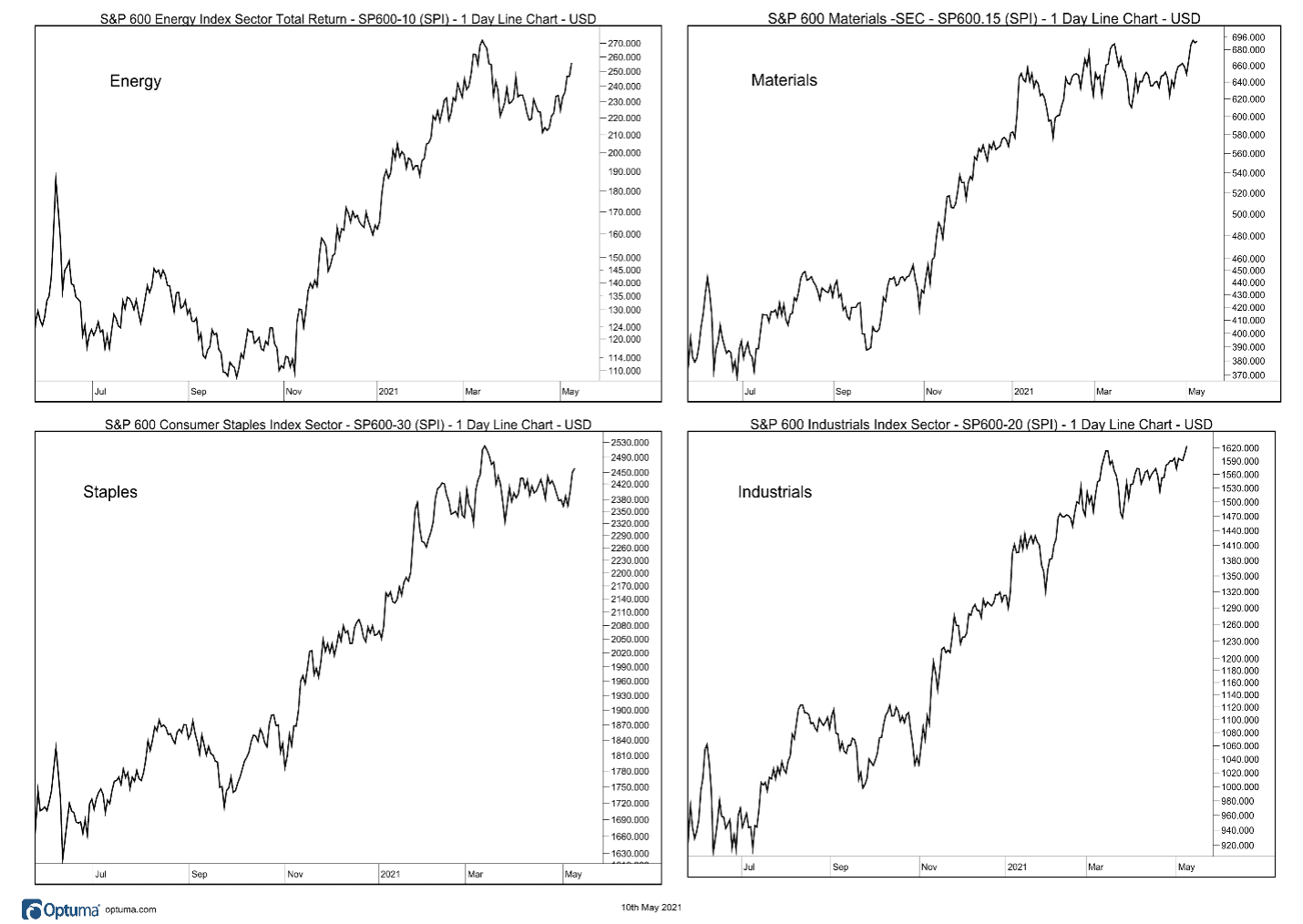
NASDAQ Breaking Down?
The Nasdaq Composite Index remains above the 10-week moving average after an attempt to push below was met with buyers into the end of the week. Thus far the moving average is acting as support, but we note that momentum continues to wane as the 14-week RSI has made a lower high and failed to become overbought on the most recent rally attempt.
On a relative basis, the NASDAQ is now pushing against the lower bound of the support zone that we have been highlighting. A break to the downside would solidify the fact that the relative trend is lower and leadership on the part of the Nasdaq has ended.
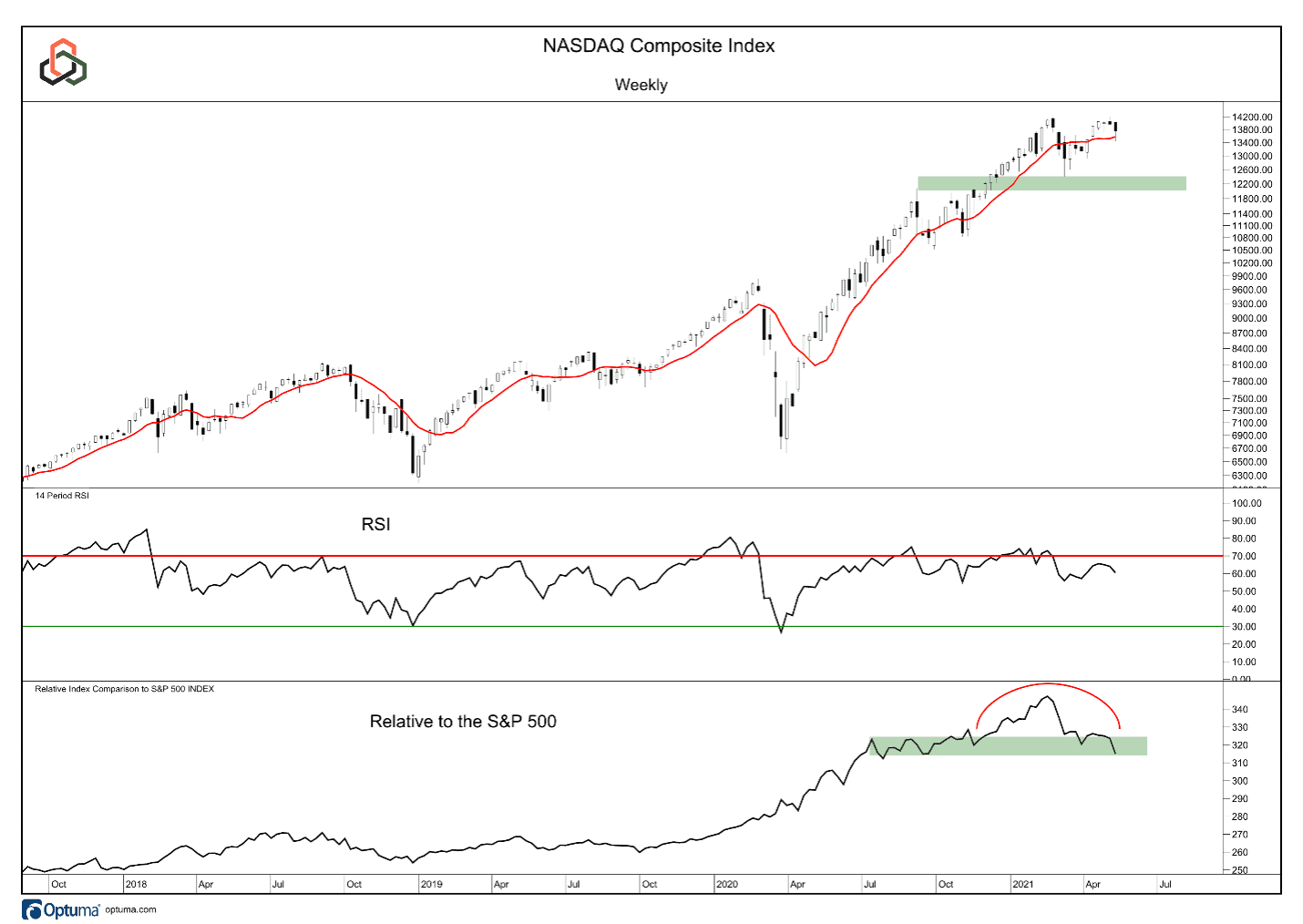
U.S. Fixed Income
The 10-year yield remains below resistance at the 2019 consolidation zone. After becoming extremely overbought in February during the spike in yields, the 14-day RSI has moved lower but remains in a bullish regime.
The yield has pulled back to test the rising 50-day moving average. Holding this level with the RSI remaining above 40 would keep the structure of the uptrend from the August low in place and increase the odds that resistance will break.
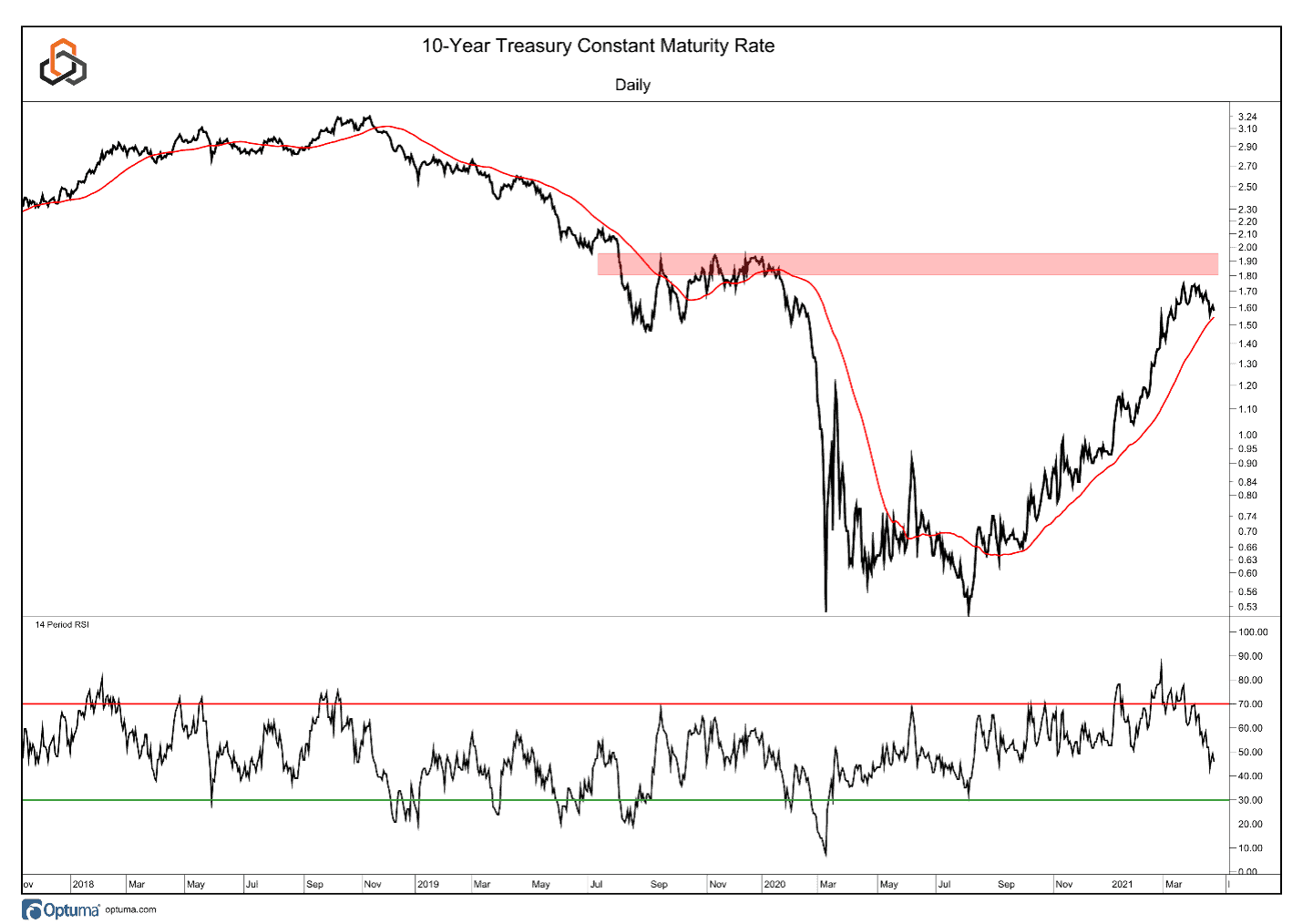
Looking across the Treasury curve, there is not much that has changed over the past week with the short-end pinned to the bottom of the chart while the long-end has seen yields fall after the 20-year and the 30-year tested (and faded from) resistance.
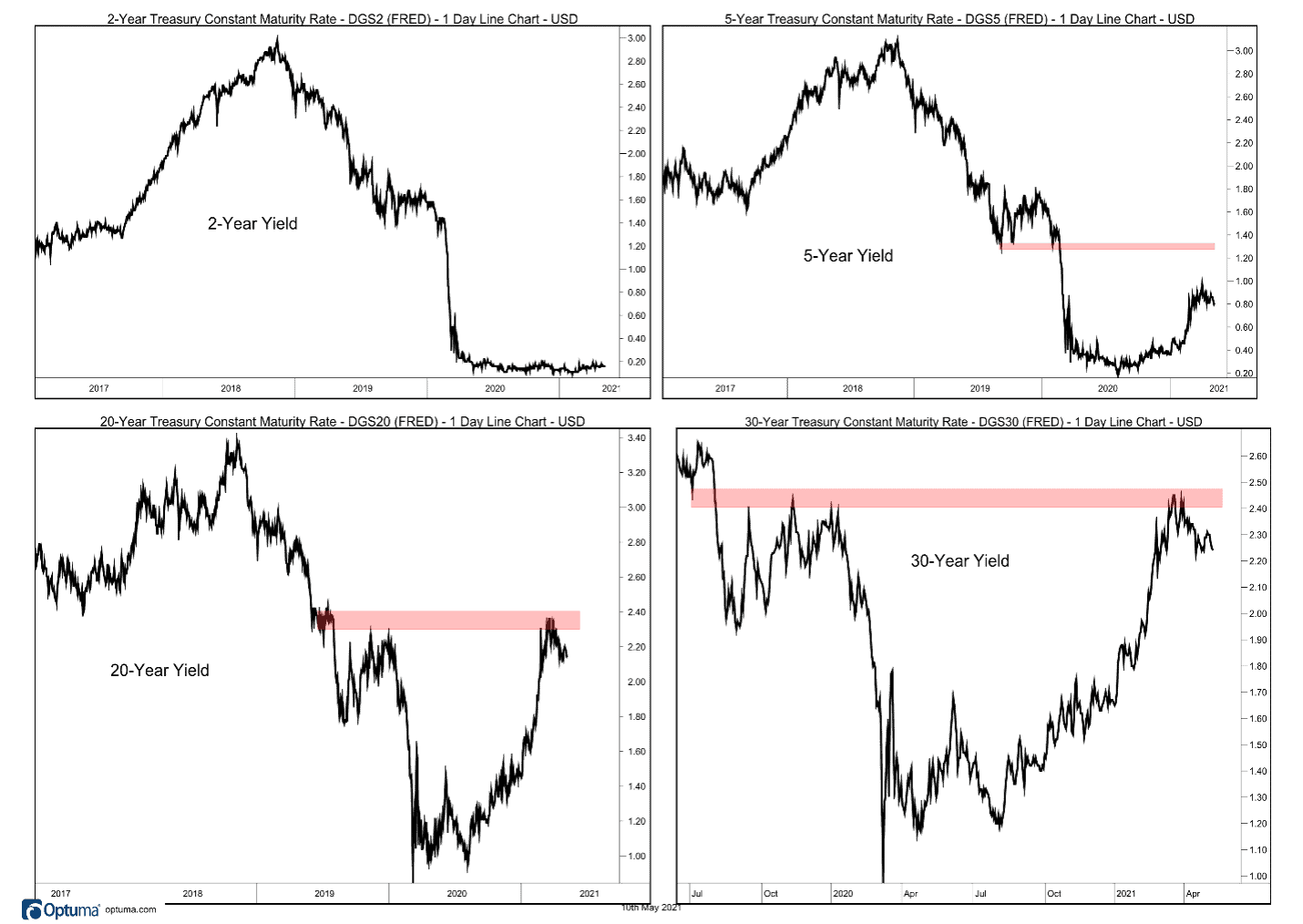
Global Equities
Not to be outdone by the U.S. markets, the Dow Jones Global World Stock Index (Excluding U.S.) traded to and closed at a new record high last week after holding support at the rising 10-week moving average.
On a relative basis, the Global Dow has been building a base for more than a year and is holding the lower end of the consolidation for now. Clearing resistance would be a signal that the trend is shifting in favor of global markets broadly. Thus far, the U.S. remains in control.
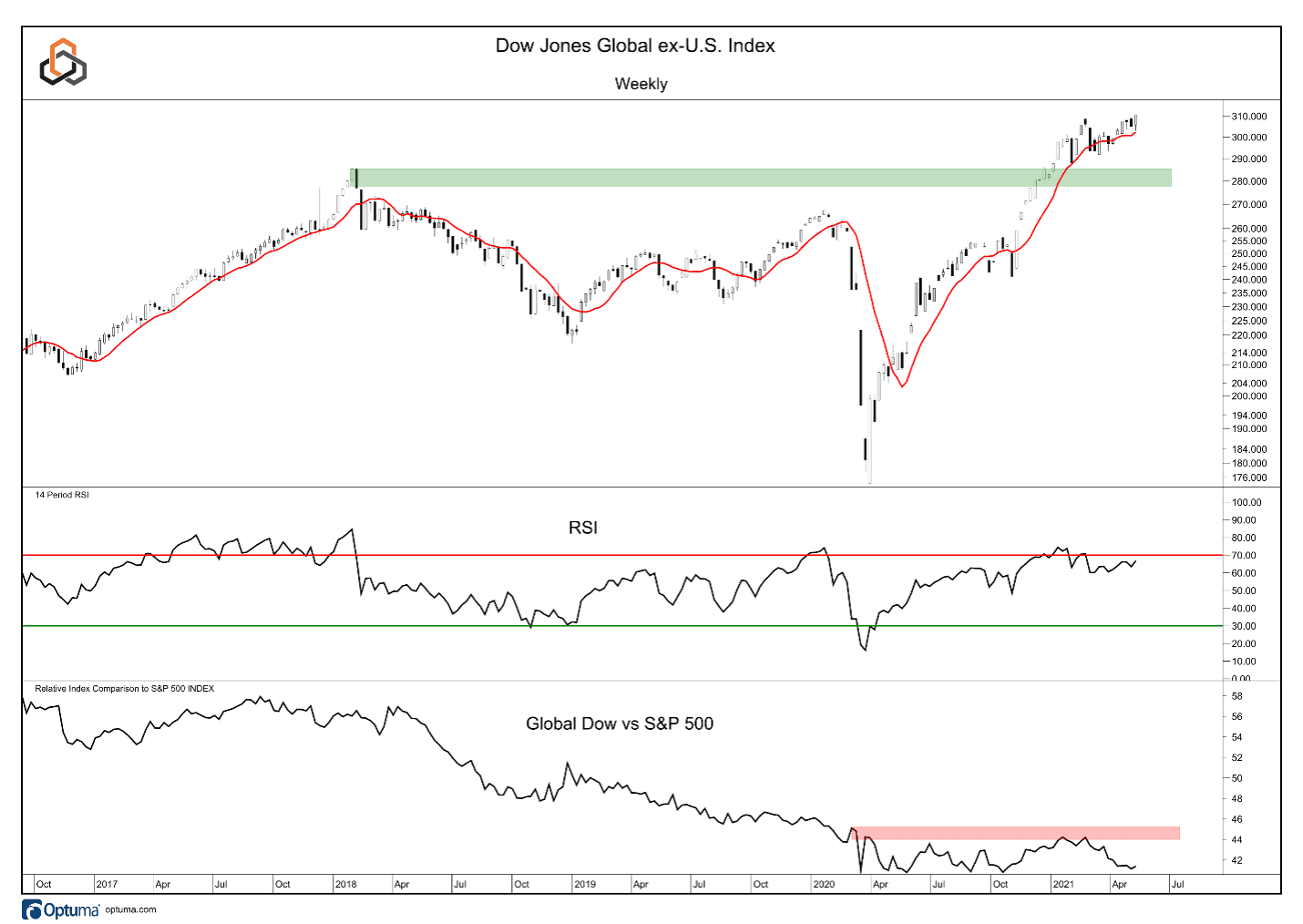
Commodities
The Bloomberg Commodity Index was stronger once again, breaking above the 2016 and 2018 highs that we have been highlighting for the past few weeks. The 10-week moving average remains support as it moves higher with price. The 14-week RSI confirms the breakout, trading to a new, 10-year, high along with the price.
Commodities are looked at as an asset class. Relative to the S&P 500, the trend of commodity underperformance has not yet ended. However, zooming in (smaller, inserted chart) we can see the relative line pushing to the top end of the zone that has been in place for nearly a year. Clearing resistance would be a step in the direction of commodity outperformance relative equities.
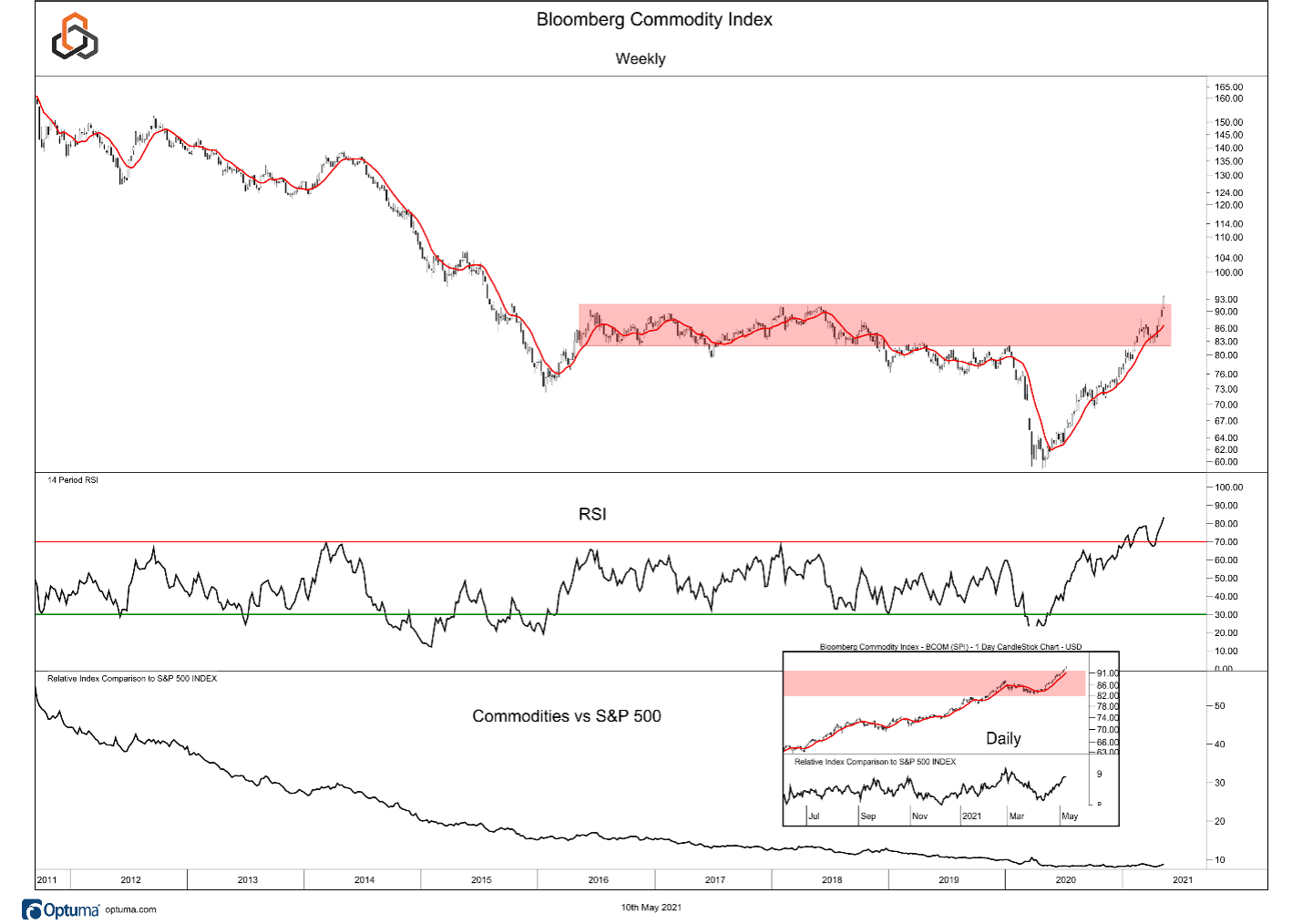
Strength in the complex remains with the Industrial Metals and Agriculture, trends that have been in place and on our radar for several weeks. More recently, the trend in the Precious Metals has begun to turn higher and that has captured some attention. We are closely watching this group for signs of sustainable relative strength. Finally, the Energy space within the commodity landscape remains in a consolidation.
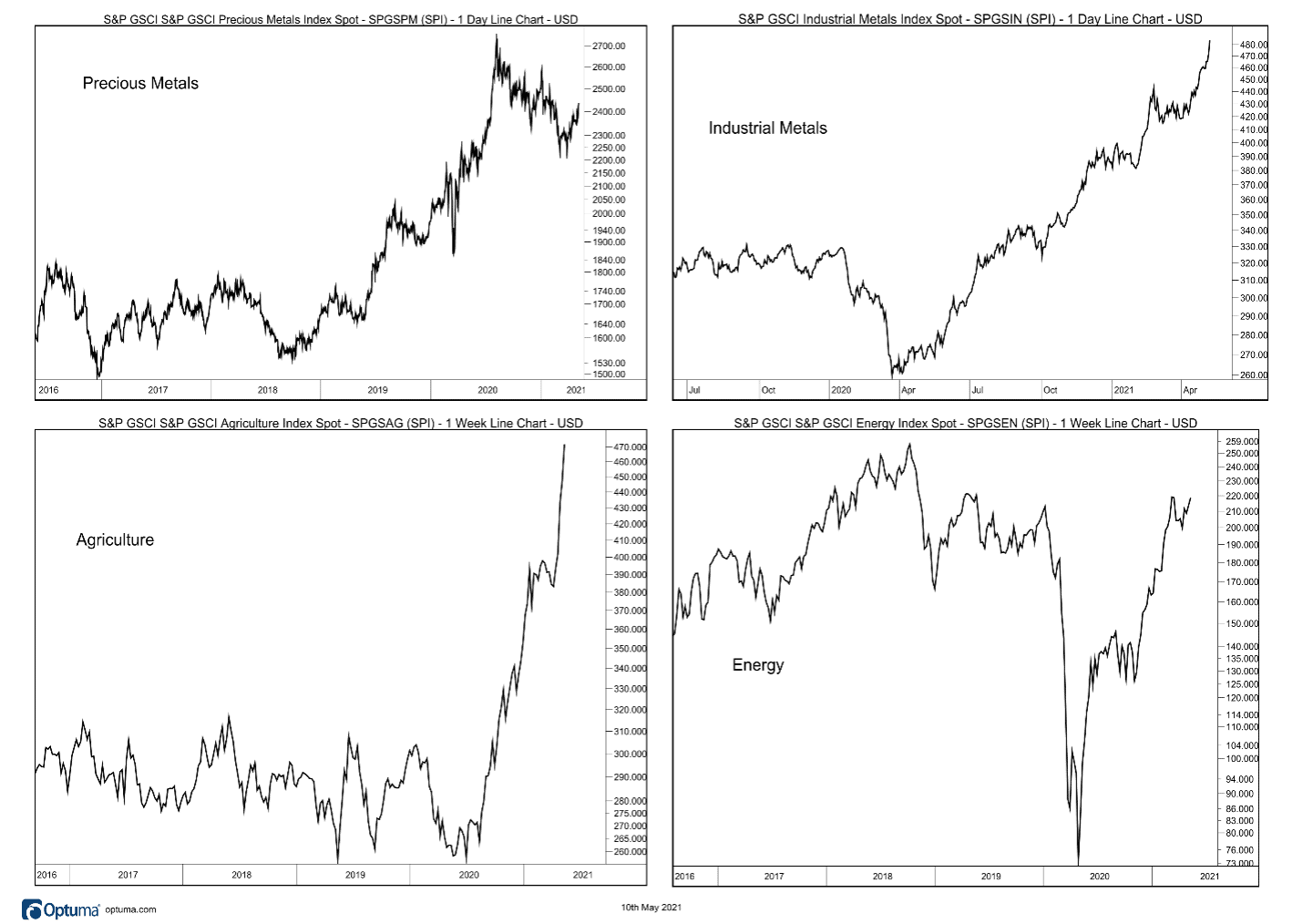
The U.S. Dollar
The Dollar resumed its slide last week and the 10-week moving average is now beginning to move lower. We have been highlighting the fact that momentum, based on the 14-week RSI is in a bearish regime, lending a confirmation to the price trend.
Drilling down on individual currencies, we can see that the “commodity” currencies such as the Australian Dollar, Canadian Dollar and New Zealand Dollar are all strong relative to the U.S. Dollar.
